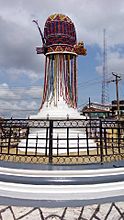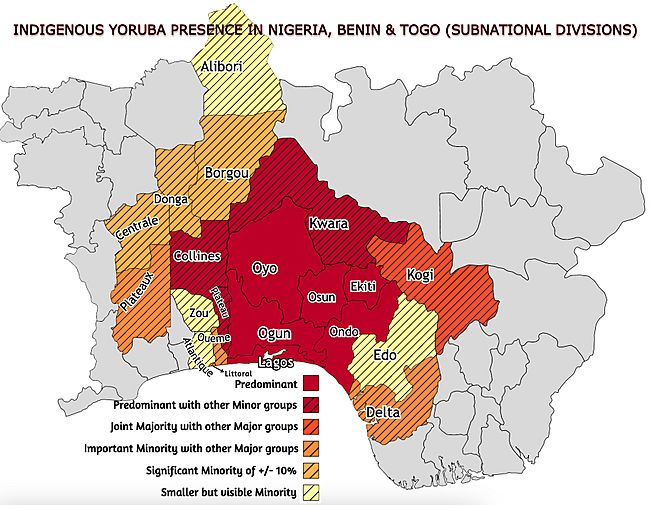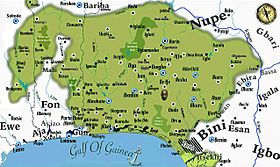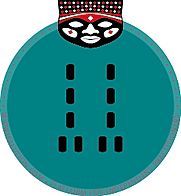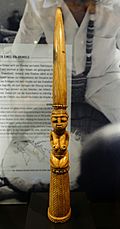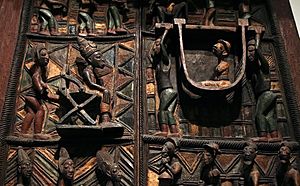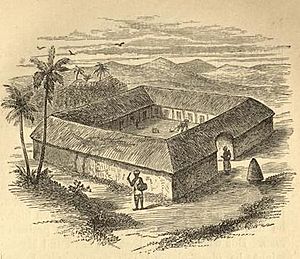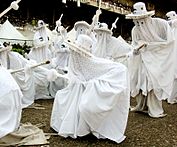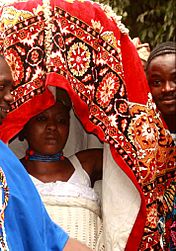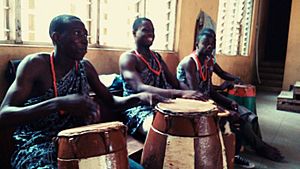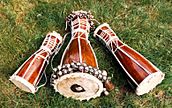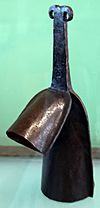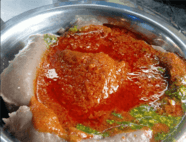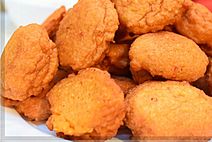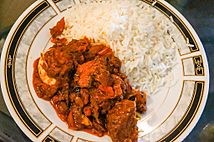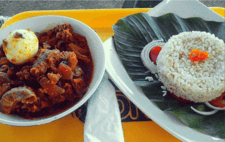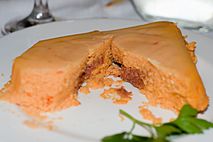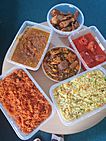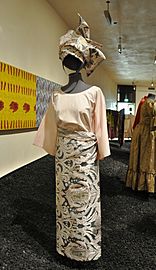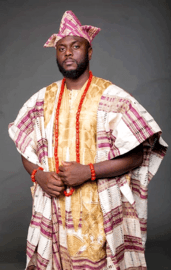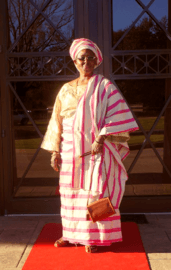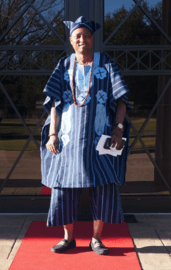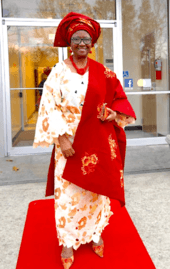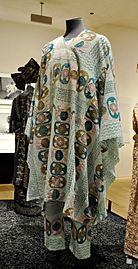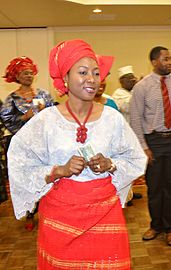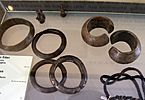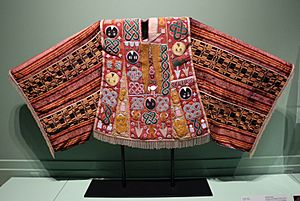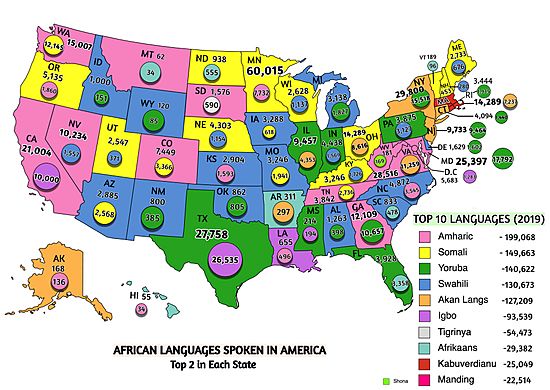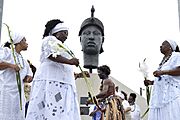Yoruba people facts for kids

A group of Yoruba people at a public event
|
|
| Total population | |
|---|---|
| c. 45,768,010 | |
| Regions with significant populations | |
| |
> 45,000,000 |
| 42,500,000(2019) | |
| 1,600,000 | |
| 546,000 | |
| 351,000 | |
| 196,000 | |
| 124,000 | |
| 102,000 | |
| 78,000 | |
| 74,000 | |
| 64,000 | |
| 57,000 | |
| 24,000 | |
| 16,210 | |
| 12,000 | |
| 10,100 | |
| 6,400 | |
| 5,300 | |
| 2,000 | |
| Languages | |
| Yoruba and Yoruboid languages Others: English or French Portuguese, Spanish |
|
| Religion | |
| Related ethnic groups | |
|
(Yoruboid) Aku · Igala · Itsekiri · Nagos · Tabom
(Gbe) Aja · Ewe · Fon · Mahi · Ogu
(Kwa) Adele · Akebu · Anii · Ga · Kposo
(Nupoid) Ebira · Gbagyi · Nupe
(Edoid) Afemai · Bini · Esan · Isoko · Urhobo
|
|
The Yoruba people (Yoruba: Ìran Yorùbá, Ọmọ Odùduwà, Ọmọ Káàárọ̀-oòjíire) are a large group of people from West Africa. They mostly live in parts of Nigeria, Benin, and Togo. This area is known as Yorubaland. There are about 45 million Yoruba people in Africa. Many also live outside Africa, especially in the African diaspora.
Most Yoruba people live in Nigeria. They make up about 15.5% of the country's population. This makes them one of the biggest ethnic groups in Africa. Most Yoruba people speak the Yoruba language. This language is part of the Niger-Congo family. It has the most native speakers in that language family.
In Africa, the Yoruba live near other groups. These include the Itsekiri to the southeast and the Bariba to the northwest. To the north are the Nupe and Ebira. The Edo and Afemai groups are to the east. The Igala live near the Niger River. To the southwest are the Gbe-speaking groups like the Mahi and Ewe. Other Yoruba groups live in Ghana, Benin, Ivory Coast, and Sierra Leone.
Outside Africa, many Yoruba people live in other parts of the world. Some were brought to the New World between the 16th and 19th centuries. This happened during the Atlantic slave trade. They went mainly to the Caribbean (like Cuba) and Brazil. More recently, many Yoruba people have moved to the United Kingdom and the United States. This migration started in the 1960s and 1980s. It was due to economic and political changes in Africa.
Contents
What's in a Name?
The name "Yoruba" has an interesting history. The oldest known mention of the name is from 1614. It was in a text by Ahmed Baba. This text listed the Yoruba among other groups in West Africa. This means the name was likely used by people even before the 1600s.
Some people thought the name came from outside sources. But many Yoruba people believe it comes from their own traditions. In 1861, an English explorer named Richard F. Burton reported a Yoruba idea. They said "Yoruba" comes from "Ori Obba." This means "The Head King."
The word "Yoruba" became widely used in the 1800s. Missionaries helped spread it to describe the larger group. Before this, people used other names like "Nago" or "Lucumi." These names are still used in some places.
The Yoruba people also have their own names for themselves. One is "Ọmọ Káàárọ̀-oòjíire." This means "The People who ask ‘Good morning, did you wake up well?'" It shows how important greetings are in Yoruba culture. Another name is "Ọmọ Oòduà." This means "The Children of Oduduwa." Oduduwa is a legendary king. He is believed to be the ancestor of the modern Yoruba people.
Yoruba History
Around 700 BCE, the people in Yorubaland were not yet called Yoruba. But they shared a common background and language. By the 8th century, a strong kingdom already existed in Ile-Ife. This was one of the earliest kingdoms in Africa. It is seen as the first capital of humanity.

The Yoruba people developed in this area. Their history comes from earlier groups from the 1st millennium BCE. Old stories from the Oyo Empire say the Yoruba came from the people of Ile-Ife. The Yoruba were a major cultural power in Nigeria from the 11th century onwards.
The Yoruba are known for living in cities. For centuries, most Yoruba lived in well-organized cities. These cities were built around powerful city-states. Each city had an Oba (king) (king). Many ancient cities were like fortresses with high walls. Yoruba cities have always been among the largest in Africa. For example, Òyó-Ilé, the capital of the Oyo Empire, had over 100,000 people.
Ibadan, a major Yoruba city founded in the 1800s, was once the largest city in Sub-Saharan Africa. Today, Lagos (Yoruba: Èkó) is another big Yoruba city. It has over twenty million people. Lagos is the largest city on the African continent.
Archaeological finds show that Ile-Ife was an urban center between the 12th and 14th centuries. Around 1300 CE, artists in Ile-Ife created beautiful, realistic sculptures. They used materials like terracotta, stone, and copper alloy. Many of these artworks were made for King Obalufon II. He is now seen as the Yoruba god of brass casting and weaving. The line of kings in Ile-Ife continues to this day. Ile-Ife is considered the origin of human civilization by the Yoruba. The period from 1100 to 1600 CE is called a "golden age" for Ile-Ife. The ruler of Ile-Ife is called the Ooni of Ife.
Major Yoruba Cities
Ife is still seen as the "Spiritual Homeland" of the Yoruba. But the Oyo Empire became the main military and political power in the 11th century.
The Oyo Empire, led by its king, the Alaafin of Oyo, was involved in the African slave trade in the 18th century. The Yoruba often asked for slaves as a payment from other groups. These groups sometimes fought others to get the slaves. Some slaves sold by the Oyo Empire went into the Atlantic slave trade.
Most Yoruba city-states were ruled by Obas (kings). They also had councils of Oloye (leaders). These leaders helped the Oba rule through different groups. The power balance between kings and chiefs varied. Some kingdoms, like Oyo, had very powerful kings. Others, like the Ijebu city-states, had more influence from their councils. The ruler of Ijebu was called the Awujale.
In recent times, Lagos has become the most important Yoruba city. It has a strong Yoruba culture and economy. Yoruba people who returned from Brazil and Cuba brought unique architectural styles to Lagos. These people were known as Amaros/Agudas.
Yoruba settlements are often grouped into "generations":
- The "first generation" includes original capitals of founding Yoruba kingdoms.
- The "second generation" includes settlements created by conquest.
- The "third generation" includes villages and towns that appeared after the wars in the 19th century.
Yoruba Language
| Person | Yoruba |
|---|---|
| People | Yoruba |
| Language | Èdè (Yoruboid) |
| Country | Ilẹ̀ Káàárọ̀-oòjíire |
.
The Yoruba culture was first passed down through spoken stories. Most Yoruba people speak the Yoruba language. About 30 million people spoke it in 2010. Yoruba is part of the Edekiri languages group. It is closely related to the Igala language. Some researchers even thought Igala was a dialect of Yoruba.
The Yoruboid languages likely developed around 1000 BCE. There are three main dialect areas: Northwest, Central, and Southeast. The Northwest Yoruba dialects show more new language features. This suggests that people moved into this area later. The Northwest Yoruba area matches the historical Oyo Empire. Southeast Yoruba was linked to the Benin Empire after 1450. Central Yoruba is a mix, sharing words with Northwest Yoruba and cultural traits with Southeast Yoruba.
Literary Yoruba is the standard version. It is taught in schools and used by newsreaders. It is based on the dialects of the Oyos and Egbas. This standard was created by Christian missionaries. Bishop Crowther, who was of Oyo origin, wrote a Yoruba grammar in the 1850s.
Who Are the Yoruba?
Yoruba people share a strong group identity. This comes from their culture and traditions. A key part of their identity is their connection to Ile-Ife. This ancient city is near the Niger River. Most Yorubas believe their people started there. They also honor King Oduduwa. He is seen as the founder and father of the Yoruba people.
Beyond history, shared beliefs also unite the Yoruba. They recognize many main gods, called Orishas. These gods were once worshipped as links between people and Olorun, the Sky God. Famous Orishas include Shango, Ogun, Osun, and Yemoja. These deities are also known in the New World. People of Yoruba descent brought them there. They help keep the Yoruba identity alive. Examples of these practices are Santeria and Candomble. These are not just religions, but also ways to keep their heritage strong.
The Yoruboid languages also connect the people. These languages are easy for speakers to understand each other. This links people from Togo and Ghana to the Itsekiri in Nigeria. Sadly, colonial actions in the 19th century divided these groups.
The Oyo Empire also helped shape Yoruba identity. It grew from earlier rule in Ife. Oyo became a powerful empire. It influenced kingdoms from Benin to Dahomey. In the 18th century, kings of Oyo, Egba, Ketu, and Jebu called each other "brother." They all looked to Oyo for leadership.
In the early 1800s, the Yoruba community included many areas. These were the British colony of Lagos, Ketu, Egba (with Abeokuta), Jebu, Ekiti, Ibadan, Oyo, Ijesha, Ife, and Ondo. There were also smaller towns like Egbado and Awori.
Other things that unite the Yoruba include:
- Using traditional Yoruba proverbs and poems.
- Common jobs like farming, hunting, and blacksmithing.
- Shared customs for greetings, births, marriages, and deaths.
- A love for celebrations and community events.
- Traditional facial marks (though this is rare now).
- Respect for elders.
- Living in urban towns with powerful kings and complex political systems.
How Yoruba Society Was Governed
Government Structure
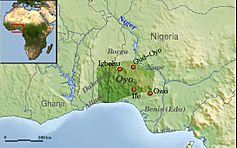
Kings ruled many parts of Yorubaland. But there were other ways of governing too. For example, the Ijebu city-states and Egba people communities were different. These areas often had an elected king. But the real power was with the Ogboni. This was a council of important elders. The idea of a divine king was very important to the Yoruba. It has been part of their system for a long time.
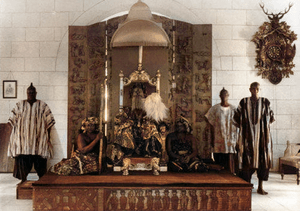
During wars in the 19th century, the Ijebu made people from over 150 Egba and Owu communities move. They went to the city of Abeokuta. Each part of Abeokuta kept its own Ogboni council. They also had a council of military leaders. Some even had their own elected kings. These councils chose their best members to join a city-wide council. A British officer described Abeokuta in 1853. He called it "the most extraordinary republic in the world."
Leadership Roles
The Egba people had councils of older leaders. These councils prevented one person from having too much power. This was also true for the northern Okun and eastern Ekiti groups. In Oyo, the king, called the Alaafin, talked with his prime minister and other nobles. This group was known as the Ọyọ Mesi.
Kings and chiefs were not chosen simply by birthright. A group of family heads would choose a member from a royal family. Then, a spiritual leader would confirm the choice. Kings lived in palaces, usually in the center of town. Across from the palace was the Ọja Ọba, or king's market. These markets were a key part of Yoruba life. Traders were well-organized. They had guilds and leaders. They also had an Iyaloja, or Lady of the Market. She spoke for the traders in the council.
City-States and Power
Only certain royal families could become kings in a city-state. A family could lose this right if a family member or servant committed a crime. In other city-states, any free-born man could be elected king. In Ilesa, Ondo, and Akure, there were rare cases of female kings. Kings often had many wives. They also married royal family members from other areas. This helped create alliances with other rulers.
Ibadan was a city-state founded in the 1800s. It was started by a mix of people: refugees, soldiers, and traders. After the fall of Oyo, Ibadan mostly did away with kings. Instead, they elected military and civil leaders from important citizens. It became a military republic. Successful soldiers gained political power. Other groups like the Ijẹsa also adopted similar ways of governing.
The Ìgbómìnà people were known for their farming and hunting skills. They were also famous for their woodcarving, leather art, and the Elewe masquerade.
Groups and Organizations
Many groups played important roles in Yoruba society. These included:
- Parakoyi (traders' league): Important for business.
- Ẹgbẹ Ọdẹ (hunter's guild): Important for hunting.
- Secret societies and religious groups: Helped with social control and education.
These groups were called Ẹgbẹ in Yoruba. For example, when the Egba fought against the Oyo Empire, a man named Lisabi helped. He used a secret farmers' union called Ẹgbẹ Aro. This group became a network of secret militias. They helped overthrow Oyo's rulers in the late 18th century.
Similar groups formed during the 19th-century wars. The Ekiti Parapọ and Ogidi alliance were military groups. They helped the Ekiti, Ijẹsa, Ìgbómìnà, and Okun Yoruba resist other empires. These included Ibadan, Nupe, and the Sokoto Caliphate.
Yoruba Culture and Society
In Yoruba cities, a special way of life continues. Their ideas have greatly influenced West Africa and other places.
Today, most Yoruba people are Muslims or Christians. But many still follow the ideas of their traditional religion. They might do this even without knowing it. Yoruba religious events like the Eyo and Osun-Osogbo festivals are popular again. People see them as cultural events. They celebrate their history and help tourism.
Traditional Yoruba Religion
The Yoruba religion includes old spiritual ideas and practices. It comes from Southwestern Nigeria and parts of Benin and Togo. This area is known as Yorubaland. Yoruba religion has many traditions and no single founder. Its beliefs are part of itan. This includes songs, histories, stories, and other cultural ideas.
A main idea in Yoruba religion is Orisa. Orisa are different godly forms. They show different sides of God in the Yoruba religious system. Some well-known Orisa are:
- Ogun: God of metal, war, and victory.
- Shango: God of thunder, lightning, fire, and justice. He is a king and carries a double-edged axe.
- Esu Elegbara: A trickster who delivers messages between humans and gods. He knows all languages and guards crossroads. Eshu has two forms: Eshu Laroye (a teacher) and Eshu Ebita (a jester).
- Orunmila: God of the Oracle. He reveals the past, solves present problems, and influences the future. This is done through the Ifa divination system. Oracle priests are called Babalawos.
Olorun is a main form of the Supreme God. He owns the heavens and is linked to the Sun. The other main forms are Olodumare (the supreme creator) and Olofi (the link between Heaven and Earth). Oshumare is a god who appears as a rainbow. Obatala is the god of clarity and creativity.
Yoruba religious practices are also found in the New World. They are part of religions like Umbanda, Winti, Obeah, and Vodun. Orisa groups are now found in parts of Europe and Asia too. Some experts believe over 100 million people worldwide follow this tradition.
Yoruba Stories and Beliefs
Yoruba stories from the Oyo Empire say that Odùduwà was the first ancestor of the Yoruba. He is seen as the father of their crowned kings. He came from the east. Some stories say this was Oke-Ora. Others say it was near the Ekiti and Okun areas in central Nigeria. This area is close to where the Yoruba language separated from other languages. After Oduduwa died, his children left Ife to start other kingdoms. Each child helped build and unite the Yoruba kingdoms. All these kingdoms trace their beginnings back to Ile-Ife. Later, the original people of the land became a threat to Ife. They were thought to be survivors from before Oduduwa arrived. They would raid the town, burn houses, and steal from markets. Then, a woman named Moremi helped. She stopped the raids but had to give up her only son, Oluorogbo. She was honored for her bravery and became a goddess. The Edi festival celebrates her actions.
Yoruba Philosophy
Yoruba culture includes philosophy, religion, and folktales. These are found in Ifa divination. They are known as the "Book of Enlightenment."
Yoruba thought has two main periods. The first is about how the world began. In this time, Oduduwa was king. He was a pioneer of Yoruba philosophy and a great diviner. He thought about the seen and unseen worlds. This period produced amazing artworks. The second period began in the 19th century. It focused on deeper ideas. Bishop Samuel Ajayi Crowther was a key figure.
Even though religion is important, philosophy (human thought) comes first. It leads to the creation of religion. Values like respect, peace, loyalty, and free speech are highly valued. Secret societies often guard and encourage these moral values. Today, many people are studying Yoruba culture and writing books about it.
Christianity and Islam
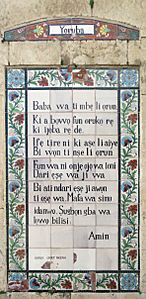
The Yoruba are very religious people. Today, they follow different faiths. They are one of the most religiously diverse groups in Africa. Many Yoruba people are Muslims, mostly following Sunni Islam. Others are Christians, belonging to various churches. A large number also continue to practice their traditional religion.
Yoruba religious festivals like Eyo and Osun-Osogbo are becoming popular again. People who follow modern faiths see them as cultural events. They take part to celebrate their history and help local tourism.
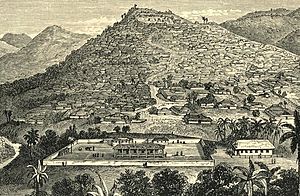
Christianity Arrives
The Yoruba were among the first in West Africa to learn about Christianity. It came to Yorubaland in the mid-1800s with Europeans. Their first goal was trade. The Portuguese visited the nearby Bini kingdom in the late 1500s. Later, the French, British, Dutch, and Germans followed. The British and French were most successful in setting up colonies. They divided Yorubaland. The larger part was in British Nigeria. Smaller parts were in French Dahomey (now Benin) and German Togoland.
Governments encouraged religious groups to come. Roman Catholics started first. They were known as Ijo Aguda. This name came from Yoruba slaves returning from Latin America. Protestants followed. The Church Mission Society (CMS) from England made the biggest impact. They spread Christianity in the inland areas. Methodists started missions in Agbadarigi in 1842. CMS workers like Henry Townsend and Ajayi Crowther worked in Abeokuta in 1846.
Hinderer and Mann of CMS started missions in Ibadan in 1853. Baptist missionaries focused on northern Yoruba areas. Other groups like the Salvation Army also became popular. The spread of Christianity led to local people becoming missionaries. But Christianity's impact was truly felt when Samuel Ajayi Crowther, a former slave, became a Christian. His language skills helped spread Christianity widely.
Islam's Influence
Islam came to Yorubaland around the 14th century. This happened through trade with Wangara merchants from the Mali Empire. They entered Yorubaland from the northwest. Because of this, Islam is known as Esin Male or Imale (religion of the Malians) to the Yoruba. Muslims are called Musulumi.
Islam gained a strong hold in Yorubaland. Muslims started building mosques. The first mosque in Iwo was built in 1655. Others followed in Iseyin (1760), Eko/Lagos (1774), and Shaki (1790). Islam spread to other towns like Oyo and Ibadan. Many Yoruba slaves taken to the Americas were already Muslim.
Traditional Art and Architecture
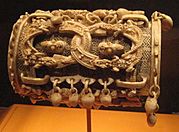
Old Yoruba towns had huge mud walls around them. Yoruba buildings were similar to Ashanti shrines. They had verandahs around a central courtyard. Walls were made of mud and palm oil. Roofs were made of thatch or metal sheets.
A famous Yoruba wall is the Sungbo's Eredo. It was the second largest wall in Africa. It was built between the 9th and 11th centuries. It honored a leader named Oloye Bilikisu Sungbo. It had large mud walls and valleys around Ijebu Ode in Ogun State. Sungbo's Eredo is the biggest pre-colonial monument in Africa. It is larger than the Great Pyramid.
Yoruba artists used many materials. These included bronze, leather, terracotta, ivory, textiles, and wood. Yoruba art is known for being very realistic. Unlike most African art, it often shows human figures in a lifelike way. The art of the nearby Benin empire shows shared ideas. Benin's brass casters learned from an Ife master named Iguegha around 1400.
Much Yoruba artwork is linked to palaces and royal courts. This includes staffs, royal clothes, and beaded crowns. Courts also ordered carved veranda posts, gates, and doors. Yoruba palaces have thick walls. They are dedicated to gods and play spiritual roles. Yoruba art is also seen in shrines and masking traditions. Shrines have carvings and altar figures. Masking traditions vary by region. Different masks are used in festivals. Some Yoruba architecture, like shotgun houses, even made its way to the New World. Today, modern styles influence Yoruba architecture.
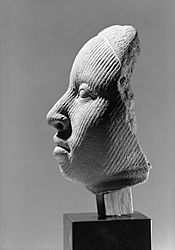
Masquerades are a key part of Yoruba art. They are called Egúngún. This term refers to masquerades linked to honoring ancestors. One famous type is the Gelede. An Ifa story says Gelede started with Yemoja, the mother of all Orisa. She couldn't have children. An Ifa priest told her to offer sacrifices and dance with wooden images on her head. After this, she had children. Her first child was a boy named "Efe" (the humorist). Her second was a girl named "Gelede" (because she loved dancing). When Efe and Gelede couldn't have children, they did the same ritual. This led to the Gelede masked dance.
The Gelede spectacle and the Ifa divination system are important. They are on the United Nations Oral and Intangible Heritages of Humanity list.
Festivals and Celebrations
Visitors to Yorubaland often notice its rich and lively culture. This is clear in their city structures. These events are a chance to experience Yoruba culture. Traditional musicians play strong rhythms. They use advanced percussion instruments. Praise singers share historical insights. People wear colorful clothes, showing their sense of style.
The Yoruba are very expressive. They celebrate big events with colorful festivals (Ayeye). Some festivals are not religious. They mark human achievements. These include:
- Wedding ceremonies (Ìgbéyàwó)
- Naming ceremonies (Ìsomolórúko)
- Funerals (Ìsìnkú)
- Housewarming (Ìsílé)
- New-Yam festival (Ìjesu)
- Harvest ceremonies (Ìkórè)
- Birth (Ìbí)
- Chieftaincy (Ìjòyè)
Other festivals are spiritual. They honor specific Orisha. Examples are Ogun day (Ojó Ògún) and the Osun festival. The Osun festival is held at the Osun-Osogbo sacred grove. It is by the Osun river in Osogbo. This festival honors the river goddess Osun. It happens every August. Thousands of Osun worshippers, tourists, and spectators attend.
The Osun-Osogbo Festival lasts two weeks. It starts with 'Iwopopo', a town cleansing. Three days later, the 500-year-old sixteen-point lamp is lit. This lamp is called Ina Olojumerindinlogun. It means The sixteen eyed fire. This lighting marks the start of the festival. Then comes 'Ibroriade'. This is when the crowns of past rulers are gathered for blessings. The Ataoja of Osogbo leads this event. The Arugba Yeye Osun, a young virgin, carries a sacred calabash. It holds offerings for the goddess Osun. Priestesses also join her. A similar event happens in the New World, called Odunde Festival.
Another popular spiritual festival is the Eyo Olokun festival. It is also called Adamu Orisha play. The people of Lagos celebrate it. The Eyo festival honors Olokun, the god of the Sea. His name means Owner of the Seas. There is no set date for the Eyo Festival. This builds excitement. Once a date is announced, preparations begin. It is a week-long event. It ends with a striking procession. Thousands of men wear white clothes and colorful hats called Aga.
The procession moves through Lagos Island Isale Eko. This is the historical center of Lagos. They visit important places, including the Oba's palace. The festival runs from dusk to dawn. It has always been held on Saturdays. A week before the festival, the 'senior' Eyo group, the Adimu, appears with a staff. This means the festival will happen the next Saturday. Other groups take turns from Monday to Thursday.
The Eyo masquerade is usually for tall people. It is called Agogoro Eyo (tall Eyo masquerade). The Eyo masquerade speaks in a special voice. This makes it seem otherworldly. When greeted, it replies: Mo yo fun e, mo yo fun ara mi. This means: I rejoice for you, and I rejoice for myself. This shows the masquerade's joy for the day and its role in cleansing. During the festival, sandals and a certain hairstyle called Suku are not allowed. The festival has also become a tourist attraction. It draws visitors from Nigeria and the Yoruba diaspora. Many believe this play is an early form of the modern carnival in Brazil. It may have been started by Yoruba slaves there.
Yoruba Music
Yoruba music is famous for its advanced drumming tradition. They especially use the dundun hourglass tension drums. Musical instruments shown in old artworks from Ile-Ife match oral traditions. Many instruments date back to the 10th century A.D. Some were even older, while others came later. The hourglass tension drum (Dùndún) might have been introduced around the 15th century. Yoruba folk music became very important in Afro-Latin and Caribbean musical styles. Yoruba music strongly influenced the music of Trinidad, the Lukumi traditions, Capoeira in Brazil, and the music of Cuba.
Yoruba drums belong to four main families. Each is used for different music styles.
- The Dùndún / Gángan family: These are hourglass-shaped talking drums. They copy the sound of Yoruba speech. This is possible because Yoruba is a tonal language. They are common in styles like Apala, Jùjú, Sekere, and Afrobeat.
- The Sakara family: These drums were used in royal events, weddings, and praise singing. They are found in Sakara music, Were, and Fuji music.
- The Gbedu family (meaning "large drum"): Used by secret groups and royal courts. Historically, only the Oba could dance to this drum. If others used it, they could be arrested. Gbèdu drums are conga-shaped and played sitting down. Akuba drums are smaller, conga-like drums used in Afrobeat. The Ogido is a cousin of the gbedu. It is also conga-shaped but has a deeper sound. Both hands play the Ogido. Today, "Gbedu" also describes Nigerian Afrobeat and Hip Hop.
- The Bàtá family: These are decorated double-faced drums with different tones. They were used in sacred rituals. People believe Shango introduced them.
Traditional Yoruba drummers are called Àyán. The Yoruba believe Àyángalú was the first drummer. He inspires drummers. This is why some Yoruba family names start with 'Ayan-'. The leader of a dundun group is the oniyalu. This means 'Owner of the mother drum'. They use the drum to "talk" by imitating Yoruba tones. Much of this music is spiritual and for the Orisas.
Each drum family has different sizes and roles. The main drum is called Ìyá or Ìyá Ìlù ("Mother drum"). Supporting drums are called Omele. Yoruba drumming shows West-African cross-rhythms. It is seen as one of the most advanced drumming traditions. Only master drummers usually improvise. Other Yoruba instruments include:
- The Gòjé (violin)
- Shèkèrè (gourd rattle)
- Agidigbo (thumb piano)
- Saworo (metal rattles)
- Fèrè (whistles)
- Aro (Cymbal)s
- Agogô (bell)
- Different types of flutes
Oriki (praise singing) is a type of sung poetry. It contains proverbs that praise a person. It is from the Egba and Ekiti people. It is often seen as the oldest Yoruba music. Yoruba music is usually Polyrhythmic. This means different rhythms fit together like a puzzle. This creates the typical sound of West African Yoruba drumming. Yoruba music is also part of modern Nigerian popular music. While traditional music was not influenced by foreign music, modern Yoruba music has changed. It has adapted to foreign instruments and styles.
Twins in Yoruba Society

The Yoruba have the highest rate of dizygotic (non-identical) twins in the world. About 4.4% of all births are twins. This might be because they eat a certain type of yam. This yam has a natural plant hormone that may make the ovaries release more than one egg.
Twins are very important to the Yoruba. They usually give special names to each twin. The first twin born is traditionally named Taiyewo or Tayewo. This means 'the first to taste the world'. It is often shortened to Taiwo. Kehinde is the name of the second twin born. Kehinde is sometimes called Kehindegbegbon. This means 'the child that came behind gets the rights of the elder'.
Twins are believed to have spiritual advantages. They are thought to have magical powers. This is different from some other cultures. In those cultures, twins might be seen as dangerous or unwanted.
Yoruba Calendar
Time is measured in:
- ọgán or ìṣẹ́jú-àáyá (seconds)
- ìṣẹ́jú (minutes)
- wákàtí (hours)
- ọjọ́ (days)
- ọ̀sẹ̀ (weeks)
- oṣù (months)
- ọdún (years)
There are 60 ìṣẹ́jú in 1 wákàtí. There are 24 wákàtí in 1 ọjọ́. There are 7 ọjọ́ in 1 ọ̀sẹ̀. There are 4 ọ̀sẹ̀ in 1 oṣù. There are 52 ọ̀sẹ̀ in 1 ọdún. There are 12 oṣù in 1 ọdún.
| Months in Yoruba calendar: | Months in Gregorian calendar: |
|---|---|
| Ṣẹrẹ | January |
| Erélé | February |
| Erénà | March |
| Igbe | April |
| Èbìbí | May |
| Okúdù | June |
| Agẹmọ | July |
| Ògún | August |
| Owérè (Owéwè) | September |
| Ọwàrà (Owawa) | October |
| Belu | November |
| Ọ̀pẹ | December |
The Yoruba week has four days. Traditionally, the week starts with Ojó Ògún. This day is for Ògún. The second day is Ojó Jákúta, for Sàngó. The third day is Ojó Òsè, for Òrìshà ńlá (Obàtálá). The fourth day is Ojó Awo, for Òrúnmìlà.
| Yoruba calendar traditional days |
|---|
| Days: |
| Ojó Ògún (Ògún) |
| Ojó Jákúta (Shàngó) |
| Ojó Òsè (Òrìshà ńlá / Obàtálá) |
| Ojó Awo (Òrúnmìlà / Ifá) |
The Yoruba calendar year starts from June 3rd to June 2nd of the next year. In this calendar, the year 2021 is the 10,063rd year of Yoruba culture. This starts with the creation of Ìfẹ̀ in 8042 B.C. To match the Gregorian calendar, Yoruba people also use a seven-day week and four-week month.
| Modified days in Yoruba calendar | Days in Gregorian calendar |
|---|---|
| Ọjọ́-Àìkú | Sunday |
| Ọjọ́-Ajé | Monday |
| Ọjọ́-Ìṣẹ́gun | Tuesday |
| Ọjọ́-'Rú | Wednesday |
| Ọjọ́-Bọ̀ | Thursday |
| Ọjọ́-Ẹtì | Friday |
| Ọjọ́-Àbámẹ́ta | Saturday |
Yoruba Food
Yoruba people mainly eat solid foods. These are often cooked, pounded, or made with hot water. They are usually made from crops like cassava, yams, and cocoyam. Other common foods include plantain, corn, beans, meat, and fish.
Some popular Yoruba dishes are:
Soups are also very common. These include egusi, ewedu, and okra. Vegetables are a big part of the diet. Foods like rice and beans (called ewa) are eaten regularly. For festivals, special dishes like jollof rice and fried rice are made. Other popular foods are ekuru, stews, eggs, chicken, beef, and different kinds of meat. Ponmo is made from cow skin. Less common foods include arrowroot gruel, sweet treats, fritters, and coconut dishes. They also have different types of bread, like yeast bread and palm wine bread.
- Yoruba cultural dishes
-
Amala is a Yoruba food.
-
Akara is a Yoruba bean fritter.
-
Ofada rice is a Yoruba dish.
-
Ofada rice is traditionally in a leaf.
-
Moin Moin is a Yoruba steamed bean pudding.
Yoruba Clothing
- Some common Yoruba cultural wear
-
Simple Iro and Buba with Gele
-
Iro and Bùbá, with Gele and Ipele made from Òfì
The Yoruba are very proud of their clothes. These clothes are often made from cotton by traditional weavers. They believe that a man's clothes show his personality and social status. Different events also need different outfits.
The Yoruba use many materials for clothing. The most basic is Aṣo-Oke. This is a hand-woven cloth with different patterns and colors. It is sewn into various styles. Aso Oke comes in three main styles:
- Alaari: A rich red Aṣọ-Oke.
- Sanyan: A brown or light brown Aṣọ-Oke.
- Ẹtu: A dark blue Aṣọ-Oke.
Other clothing materials include:
- Ofi: Pure white yarned cloths, used as cover cloths or sewn into clothes.
- Aran: A velvet material, sewn into Danṣiki and Kẹmbẹ. Rich people wear it.
- Adirẹ: Cloth with patterns, dyed in indigo ink.
Yoruba clothing is different for men and women. For men, there are Bùbá, Esiki, and Sapara. These are like underwear. They also have Dandogo, Agbádá, Gbariye, Sulia, and Oyala. These are like overcoats. Some men add a wraparound (Ìbora) to their Agbádá.
Men also wear different types of Sòkòtò (native trousers). These include Kèmbè (three-quarter baggy pants), Gbáanu, Sóóró (long slim pants), Káamu, and Sòkòtò Elemu. A man's outfit is not complete without a cap (Fìlà). Some caps are:
- Gobi: Cylindrical, can be shaped forward, sideways, or backward.
- Tinko
- Abetí-ajá: Shaped like a dog's hanging ears. The flaps can cover the ears in cold weather.
- Alagbaa, Oribi, Bentigoo, Onide, and Labankada.
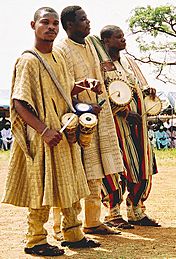
Women also have different types of dresses. The most common are Ìró (wrapper) and Bùbá (blouse-like loose top). Women also wear a matching Gèlè (headgear). Just like a cap for men, a Gèlè is important for women. It can be simple or expensive. They also have ìborùn (Shawl) and Ìpèlé. These are long pieces of fabric that hang over the left shoulder. Sometimes, they are tied around the waist over the wrapper. Women have two types of underwear: Tòbi (like an apron with pockets) and Sinmí (a sleeveless T-shirt).
There are many types of beads (Ìlèkè), hand laces, necklaces (Egba orùn), anklets (Egba esè), and bangles (Egba owó). Both men and women wear these for decoration. Chiefs, priests, and kings use some beads to show their rank. These include Iyun, Lagidigba, Àkún. An important accessory for royalty and priests is the Ìrùkèrè. This is an animal tail used as a Fly-whisk. It symbolizes authority.
Most men keep their hair short. But women often have long hair. Hair is seen as the "Glory of the woman." They usually plait or weave their hair. There are many styles like kòlésè, Ìpàkó-elédè, Sùkú, Kojúsóko. Traditionally, the Yoruba used tribal marks to add beauty to the face. These marks also showed where a person came from. Different areas had different marks. They were made on the cheeks when children were babies. Examples include Pélé, Abàjà-Ègbá, Abàjà-Òwu. This practice is now almost gone.
The Yoruba believe that a nation's growth is like a person's growth. So, a person's character must be developed to fulfill their duties. Clothing is a key part of a person's character among the Yoruba. This belief is found in Yoruba proverbs. Different events also require different clothes.
Where Yoruba People Live
In Benin
About 1.1 to 1.5 million Yoruba people live in Benin. They are the main group in the Ouémé, Collines, and Plateau provinces. They are also found in parts of Borgou, Zou, Donga, and Alibori provinces.
Major Yoruba cities and towns in Benin include:
- Porto-Novo (Ajase)
- Ouèssè (Wese)
- Ketu
- Savé (Tchabe)
- Tchaourou (Shaworo)
- Bantè-Akpassi
- Bassila
- Ouinhi
- Adjarra
- Adja-Ouèrè (Aja Were)
- Sakété (Itakete)
- Ifangni (Ifonyi)
- Pobè
- Dassa (Idasha)
- Glazoue (Gbomina)
- Ipinle
- Aledjo-Koura
- Aworo
In Ghana
Ghana has an old and active Yoruba community. It dates back over three centuries. Yoruba people were in Ghana before it became a modern nation. So, they are Ghanaian citizens. Yoruba communities grew through different waves. The first were merchants, artisans, and explorers. They settled in places like Salaga, Sekondi-Takoradi, and Kumasi. In Ngleshie Alata (a name for Yoruba people), their presence dates to 1673. They were hired to build a fort. A Yoruba speaker named Ojo became the head of the Alata quarter in 1748. His family still holds this position.
In the 18th-century Salaga Slave Market, Yoruba residents would buy their fellow Yoruba. They would not let them be sold to the Ashantis. Instead, the freed Yoruba would work for their rescuers until they earned their freedom. Later, former slaves of Yoruba descent, like the Taboms, settled along the Ghanaian coast.
A third wave came during the colonial period. By then, Yoruba people were deeply involved in trade. They were a large part of merchants and traders. They were the biggest group of immigrants before Ghana's independence. In 1950, they made up 15% of traders in Accra. They were called Yoruba, Lagosian, Alata, or Anago. In the 1830s, this wave helped establish Accra New Town. It was first known as Lagos town.
Ghana's recent censuses do not list Yoruba as a separate group. But in earlier censuses, they were seen as an indigenous Ghanaian group. In the 1960 census, there were 109,090 Yorubas. This was 1.6% of Ghana's population.
In Nigeria
The Yoruba are the main ethnic group in these Nigerian states:
They are also a smaller group in Delta State, western Kogi, and Edo.
Major Yoruba cities and towns in Nigeria include:
- Abẹokuta
- Ado-Ekiti
- Akurẹ
- Badagry
- Ede
- Ibadan
- Ijebu Ode
- Ilesa
- Ilọrin
- Iwo
- Lagos (Eko)
- Ogbomoso
- Ondo City (Ode Ondo)
- Osogbo
- Ota
- Owo
- Ọyọ
- Shagamu
- Shaki
In Togo
About 500,000 to 600,000 Yoruba people live in Togo. There are Yoruba immigrants from Nigeria. There are also native Yoruba communities in Togo. For example, the footballer Emmanuel Adebayor is Togolese with Yoruba roots. Native Yoruba communities are found in the Plateaux Region, Centrale Region, and Tchamba Prefecture.
Major Yoruba cities and towns in Togo include:
- Atakpame
- Anié
- Morita (Moretan)
- Ofe
- Elavagnon
- Goubi
- Kambole
- Akpare
- Glei
- Kamina
- Tchekita
Other West African Countries
About 70,000 Yoruba live in Burkina Faso. Around 60,000 live in Niger. In the Ivory Coast, they mostly live in cities like Abidjan and Bouake. They work in retail at big markets. They are known as "Anago traders." They control certain parts of the retail economy. There are at least 135,000 Yoruba people there.
The Yoruba Diaspora
Yoruba people and their descendants live all over the world. They are found especially in the United Kingdom, Canada, the United States, Cuba, Brazil, Latin America, and the Caribbean. Many Yoruba communities also exist in South America and Australia.
In the United States, Yoruba is the most spoken African language in homes in Texas, Florida, and other states. It is the second largest African language community in many other states.
The movement of Yoruba people worldwide has spread their culture. This happened due to the Atlantic slave trade and people choosing to move. Their exact population outside Africa is not known. In the Atlantic world, Yoruba people were called "Nagos/Anago," "Terranova," "Lucumi," and "Aku."
The Yoruba had a big impact in Cuba and Brazil. Especially in Havana and Bahia. A report from the 1800s said the Yoruba were the most numerous and influential group in Bahia. Many were from Oyo. Others were from Ijexa, Lucumi, Ota, Ketus, Ekiti, and Ijebu. Between 1816 and 1850, Yoruba people made up 69.1% of all slaves whose origin was known. They were 82.3% of slaves from the Bight of Benin.
Between 1831 and 1852, the number of African-born slaves and free people in Salvador, Bahia grew larger than Brazilian-born Creoles. Between 1808 and 1842, about 31.3% of freed Africans were Nagos (Yoruba). This number rose to 73.9% between 1851 and 1884.
Other places with many Yoruba people and influence include:
- Puerto Rico
- Saint Lucia
- Grenada
- Santa Margarita
- Belize
- British Guyana
- Saint-Domingue (now Haiti)
- Jamaica (where they founded places like Abeokuta)
- Barbados
- Dominican Republic
- Montserrat
On July 31, 2020, the Yoruba World Congress joined the Unrepresented Nations and Peoples Organization (UNPO).
|
See also
 In Spanish: Pueblo yoruba para niños
In Spanish: Pueblo yoruba para niños


